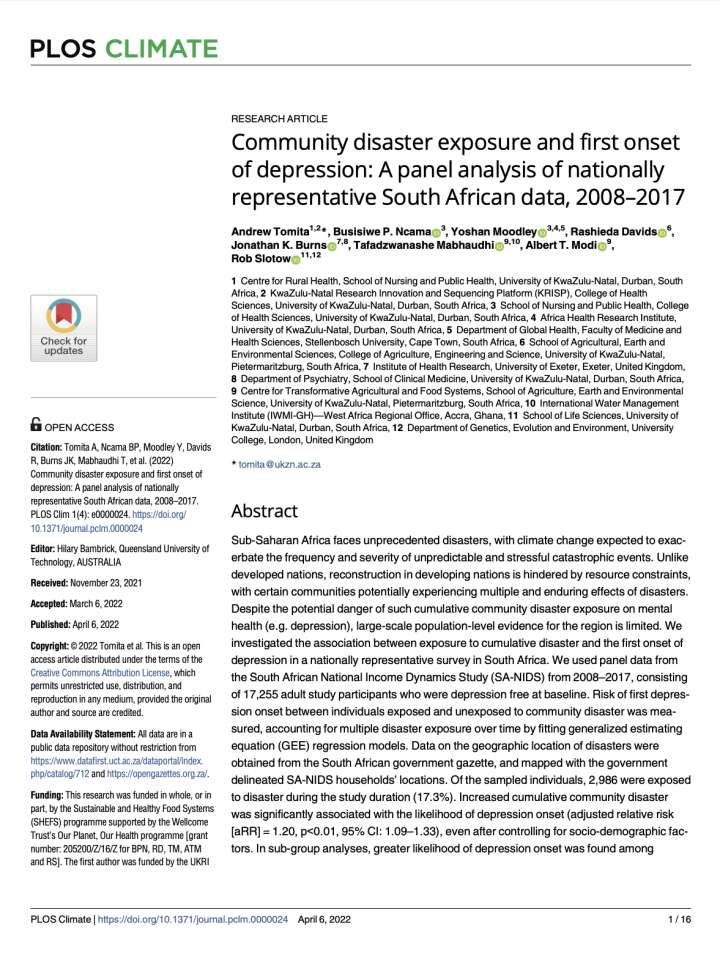Community disaster exposure and first onset of depression: A panel analysis of nationally representative South African data, 2008–2017
This paper investigates the association between exposure to cumulative disaster and the first onset of depression in a nationally representative survey in South Africa. Sub-Saharan Africa faces unprecedented disasters, with climate change expected to exacerbate the frequency and severity of unpredictable and stressful catastrophic events. Unlike developed nations, reconstruction in developing nations is hindered by resource constraints, with certain communities potentially experiencing multiple and enduring effects of disasters. Despite the potential danger of such cumulative community disaster exposure on mental health (e.g. depression), large-scale population-level evidence for the region is limited. The researchers used panel data from the South African National Income Dynamics Study (SA-NIDS) from 2008–2017, consisting of 17,255 adult study participants who were depression free at baseline. Risk of first depression onset between individuals exposed and unexposed to community disaster was measured, accounting for multiple disaster exposure over time by fitting generalized estimating equation (GEE) regression models. Data on the geographic location of disasters were obtained from the South African government gazette, and mapped with the government delineated SA-NIDS households’ locations.
The paper finds that of the sampled individuals, 2,986 were exposed to disaster during the study duration (17.3%). Increased cumulative community disaster was significantly associated with the likelihood of depression onset (adjusted relative risk [aRR] = 1.20, p<0.01, 95% CI: 1.09–1.33), even after controlling for socio-demographic factors. In sub-group analyses, greater likelihood of depression onset was found among females [but not in men] (aRR = 1.23, p<0.01, 95% CI: 1.09–1.38), Black African [but not in other population group] (aRR = 1.21, p<0.01, 95% CI: 1.09–1.36), lower education attainment group [but not in tertiary and above educational attainment group] (aRR = 1.20, p<0.01, 95% CI: 1.08–1.33), and lower income attainment group [but not in the top income quartile group] (aRR = 1.24, p<0.01, 95% CI: 1.11–1.38), due to cumulative community disaster. Although cumulative community disaster exposure was significantly associated with the first onset of depression, its negative impact may be more pronounced among individuals considered chronically socially vulnerable (i.e. the groups above) in South Africa. Given that many individuals in South Africa rely on social, food parcel relief, and health services from government/public sector, timely access to community-based supportive intervention is needed for disaster survivors, prioritizing socially vulnerable groups to help mitigate problems associated with mental health challenges.
Explore further

